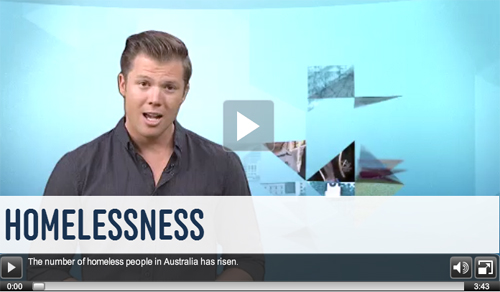“Teacher, how can I improve my English, specifically my listening skills?”
“Teacher, the Australian accent is so difficult to understand – what can I do to practice?”
If you are an English language student, I’m sure you may have asked your teacher one of the above questions at some time. A lot of students have asked me how they can improve their English skills OUTSIDE of the classroom. We want to encourage you to use your English outside of the classroom, but maybe you don’t know how, or where to find extra practice.
So, today, this blog entry is about giving you one link to authentic Australian listening practice which you can do at home if you have access to the internet; or even during your Accelerate time.
We will look at a TV news series called “Behind the News” – or BTN for short. What is BTN? BTN is a “high energy, fun way for upper primary school and secondary students to learn about current issues and events in their world.” In Australian schools, it is often common for students to watch this show during their classes. Even if you are much older than a secondary school student, I think this show will still be really interesting to you. Students tell me that Australian television is too difficult for them to understand, so they turn it off and don’t watch anything. But how can students build their listening skills, and gain exposure to the Australian accent if they don’t try, and just turn off the TV?
But if students practice their listening in a more guided way, then I think it will be much more helpful. So, let me show you what you can do to practice your listening skills, using BTN.
Simply type BTN News into your search browser. It will probably be the first link in the list.
Otherwise, here is the website address for the BTN homepage. http://www.abc.net.au/btn
Every week, a new episode of BTN is released. So, on this home page, you can click on the video links at the top of the page to watch this week’s episode.
Another option is to click on the “Stories” link (which is located on the toolbar at the top of the page, next to the “Home” button). http://www.abc.net.au/btn/stories.htm
This time, you will see a link to all stories and episodes of BTN. They are labeled as Episode #34; Episode #33 etc. You can access all videos that date back to 2006. Each story in each episode is also clearly labeled by topic – so if you are interested in certain news events or topics – for example, the storm that hit the United States; the US presidential election; or even learning about Australian animals and animal rescue, you can watch a specific story about that specific topic.
So, let’s choose one story to investigate together.
In the latest episode of BTN (Episode #34, 20/11/2012) there is a story about Homelessness in Australia.
First, click on the “Stories” link. http://www.abc.net.au/btn/stories.htm
Now, click on the video called “Homelessness.” http://www.abc.net.au/btn/story/s3633710.htm
When you click on this, a new page will open and the video will appear at the top of the page. Under the video, you will see some writing in a big yellow box that says “FULL TRANSCRIPT.” The Transcript is the script, or the words of the video. If you click on this, you will be able to read the words of the video while you watch the video. This is so great! So, while you are listening to the video, if you hear some words that you don’t know or understand, you can check it against the transcript. This can help you expand your vocabulary, and also hear and practice pronunciation of different words.
While you are listening, aside from the transcript, there are often worksheets which you can complete. To see if there are any available worksheets for the video you are watching, you just have to check on the right hand side next to the video, located on the “Stories” page (http://www.abc.net.au/btn/stories.htm). For example, next to the Homelessness video you can click on a link called “Homelessness activity.” A new page will open up to a document with questions. You can save this page to your computer as well and complete while listening to the video.
Now, if you really like this topic and want to do some further reading, you can keep expanding your vocabulary and reading skills as well.
On the same page where we watched the Homelessness video, (http://www.abc.net.au/btn/story/s3633710.htm) on the right hand side of the video you will see a heading that says, “RELATED INFORMATION.” This topic has 7 different websites and/or documents so you can read more about this topic.
As you can see, there is LOTS of information available on this website!
So why not try it?! As I said, you can even do this during your Accelerate time as well. Simply see the Accelerate teacher and tell them what you are doing – and they will be happy to stamp your passport with “Listening” so you’ve got recognition of your extra work.
I hope this provides you with some ideas for authentic listening practice. If you try it, post a comment below – I’d love to hear your feedback.
